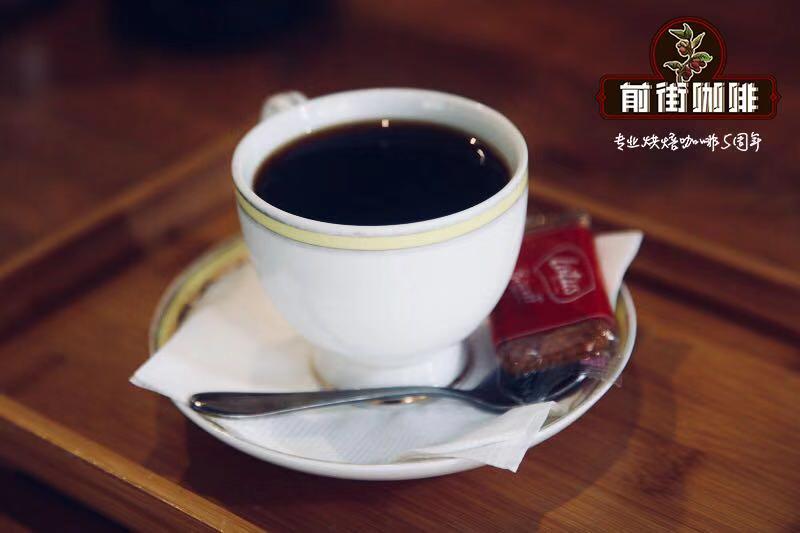Sumatra Coffee Courage Source Story Sumatra Coffee Bean Types and Characteristics

Professional coffee knowledge exchange more coffee bean information please follow the coffee workshop (Wechat official account cafe_style)
A brief introduction to the source of Sumatra coffee beans in Qianjie
History of Sumatran Coffee
Coffee was introduced to the Indonesian islands by the Dutch in the 16th century and was first exported by the Dutch East India Company in the early 17th century. The Dutch usually had large plantations, and under the colonial regime, workers and locals were persecuted economically and politically. In the 1860 novel Magus Hafral, or the Coffee auction of the Dutch Trading Company, the Dutch Trading Company outlined a variety of ways in which the Dutch government and landlords abused and oppressed the Indonesian people. Especially in Sumatra and Java, hunger and poverty are common among coffee workers and indigenous societies.
In the 1860s and 1970s, outbreaks of coffee leaf rust destroyed the Indonesian coffee market and caused the Dutch to abandon many estates. With the collapse of the plantation, workers occupied small plots of land and eventually replanted coffee with Robosta coffee and various disease-resistant Arabica hybrids. This redistribution of land has given the island's small farmers a dominant position, an advantage that has existed to this day. On the whole, Indonesia is currently the fourth largest coffee producer in the world.
Sumatran caffeine is famous for its unique aroma of herbs and trees. This is partly due to the mix of planting varieties and the local climate. On the other hand, it is due to a special processing method, called wet shell method, locally known as Giling Basah, which gives these coffees many unique qualities.
Typica was the first variety to be planted in Java and Sumatra, but this variety was almost completely wiped out by leaf rust more than a hundred years ago. But some typical native varieties can still be found in the high elevations of Sumatra.
In Indonesia, some of the most commercially viable arabica varieties do have a bit of robusta inheritance, making them more resistant to disease. This is true for both Catimor and Hibrido de Timor.
Linie S, another ubiquitous disease-resistant variety, is a natural variation of Liberia and Bourbon and originated in India.
In the late 1920s, a batch of Ethiopian coffee was brought to Sumatra and is still being grown. They are called Abyssinia and Rambung.
END
Important Notice :
前街咖啡 FrontStreet Coffee has moved to new addredd:
FrontStreet Coffee Address: 315,Donghua East Road,GuangZhou
Tel:020 38364473
- Prev

Sumatra Manning Coffee Bean name Origin Story characteristics Golden Manning making siphon Coffee parameters
Professional coffee knowledge exchange more coffee bean information please follow the coffee workshop (Wechat official account cafe_style) front street Sumatra Coffee Story Sumatra, Indonesia's second largest island, north of the Strait of Malacca, facing the Malay Peninsula. It extends from northwest to southeast, and the equator runs through the middle of it.
- Next

Introduction of Sumatra Coffee in Indonesia A brief introduction to the flavor and taste of Sumatra aged coffee beans
Professional coffee knowledge exchange more coffee bean information please follow the coffee workshop (Wechat official account cafe_style) the front street of Indonesia Sumatra coffee history for most coffee people, the first reaction will be associated with the wild and domineering taste, rich and mellow without losing the characteristics of Mantenin coffee. After all, under the current wave of boutique coffee, no
Related
- Beginners will see the "Coffee pull flower" guide!
- What is the difference between ice blog purified milk and ordinary milk coffee?
- Why is the Philippines the largest producer of crops in Liberia?
- For coffee extraction, should the fine powder be retained?
- How does extracted espresso fill pressed powder? How much strength does it take to press the powder?
- How to make jasmine cold extract coffee? Is the jasmine + latte good?
- Will this little toy really make the coffee taste better? How does Lily Drip affect coffee extraction?
- Will the action of slapping the filter cup also affect coffee extraction?
- What's the difference between powder-to-water ratio and powder-to-liquid ratio?
- What is the Ethiopian local species? What does it have to do with Heirloom native species?

